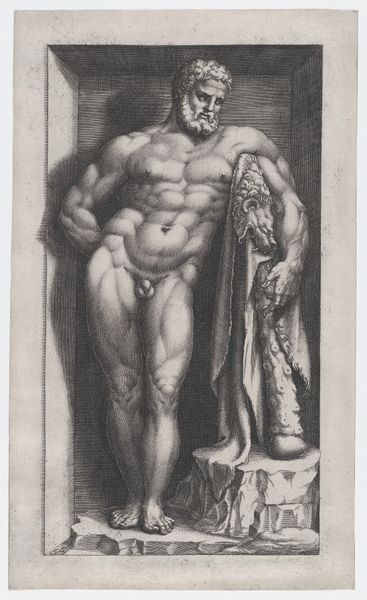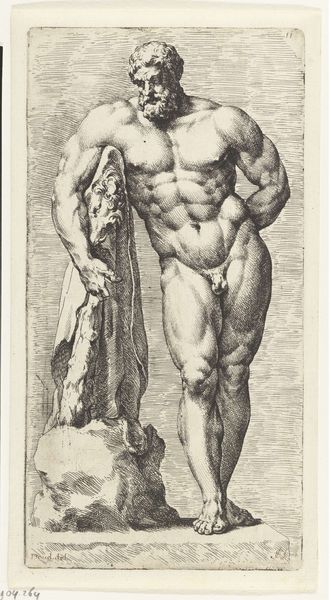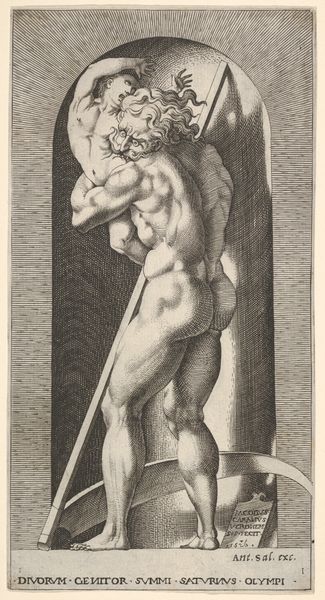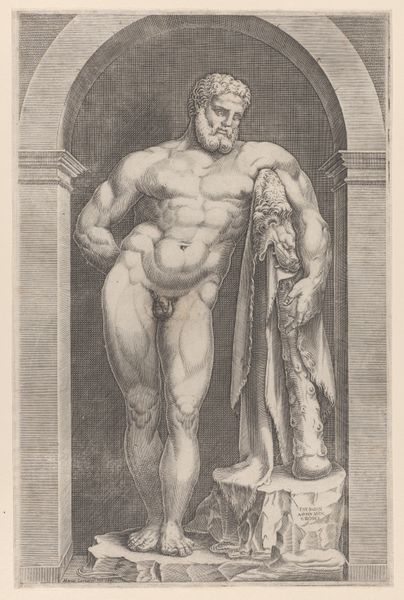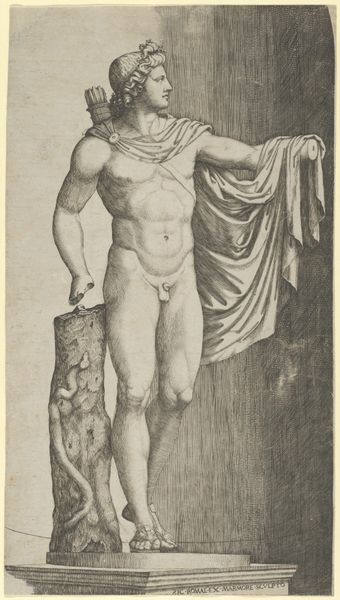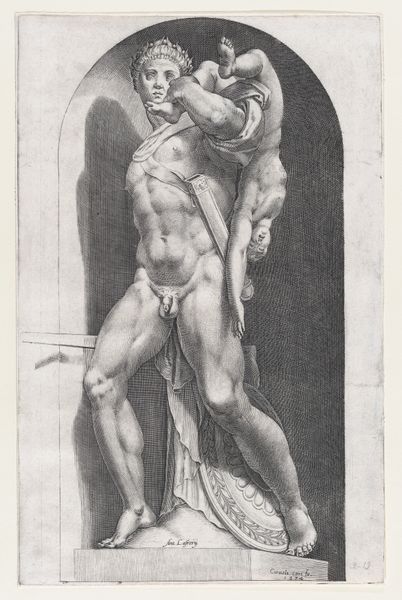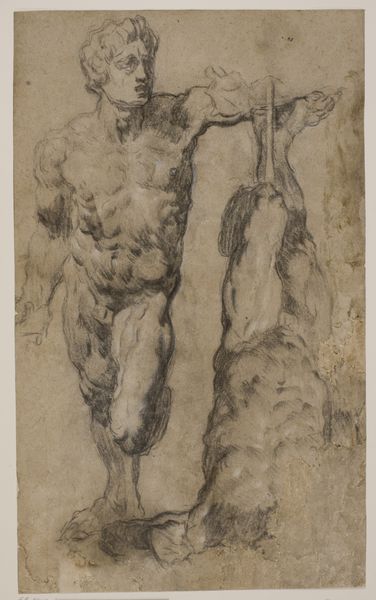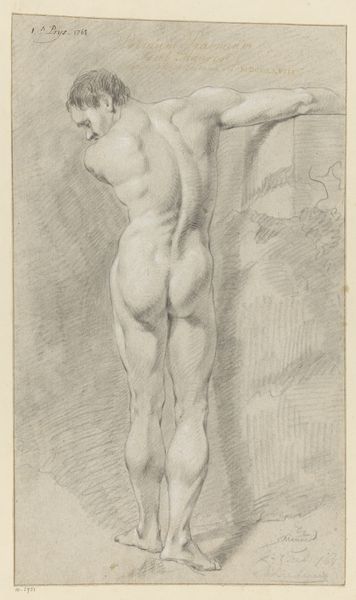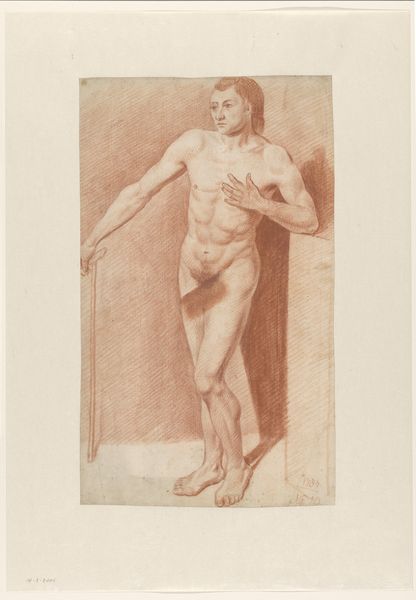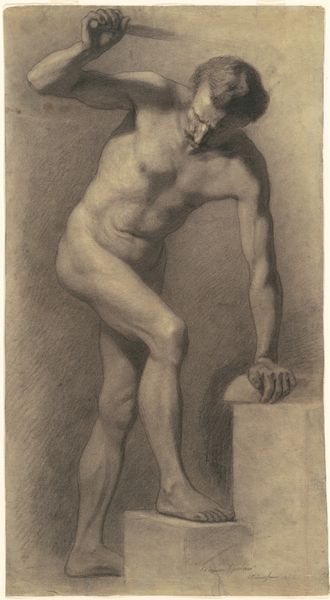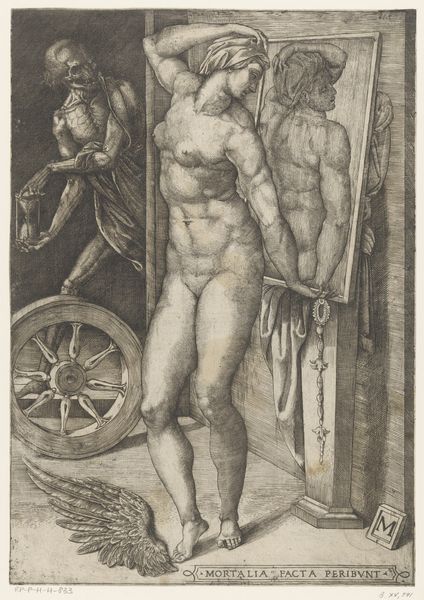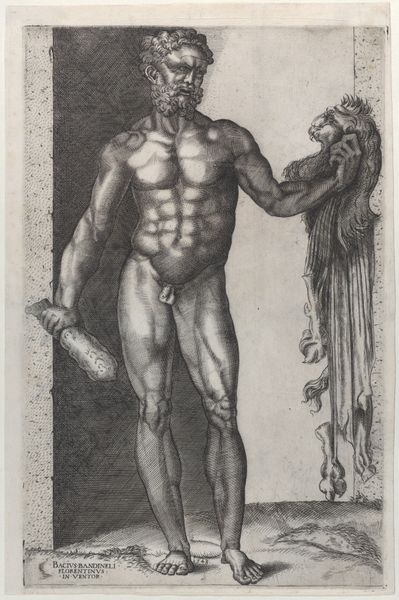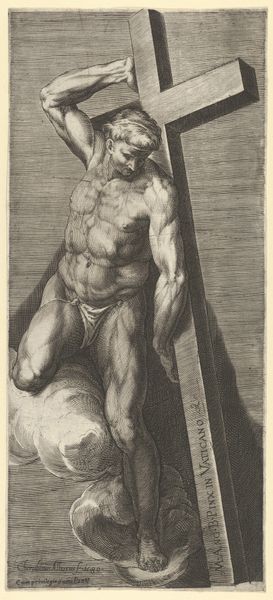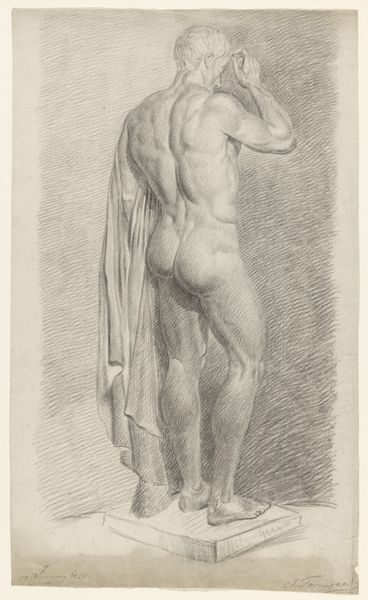
drawing, print, engraving
#
drawing
# print
#
mannerism
#
figuration
#
history-painting
#
nude
#
engraving
Dimensions: sheet: 12 11/16 x 6 3/4 in. (32.3 x 17.1 cm) borderline
Copyright: Public Domain
Giorgio Ghisi made this engraving of the Farnese Hercules in the mid-16th century. The image depicts the ancient statue of Hercules, a symbol of strength and heroic virtue, but its meaning is shaped by the culture of Renaissance Italy. In Ghisi's time, the rediscovery of classical antiquity was transforming European art and thought. Artists looked to ancient models for inspiration, and wealthy patrons collected Roman sculptures as status symbols. Consider the role of institutions like the Vatican, which promoted classical learning and amassed vast collections of antiquities. The image of Hercules, a pagan hero, was appropriated by Christian culture and given new moral meaning. As an art historian, my job is to uncover these layers of meaning by studying the social and intellectual context in which the image was created. By consulting primary sources, such as letters, diaries, and inventories, we can better understand the complex interplay of power, patronage, and artistic innovation that shaped the Renaissance. Art's meaning always depends on the context in which it is made.
Comments
No comments
Be the first to comment and join the conversation on the ultimate creative platform.
